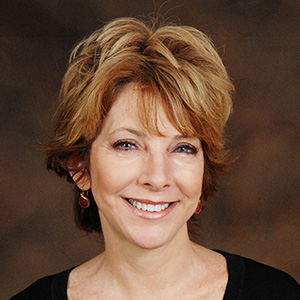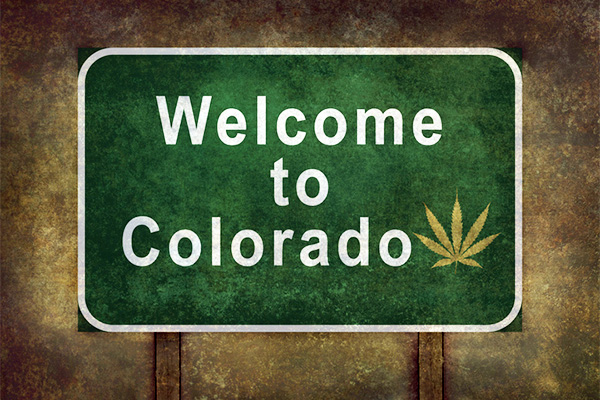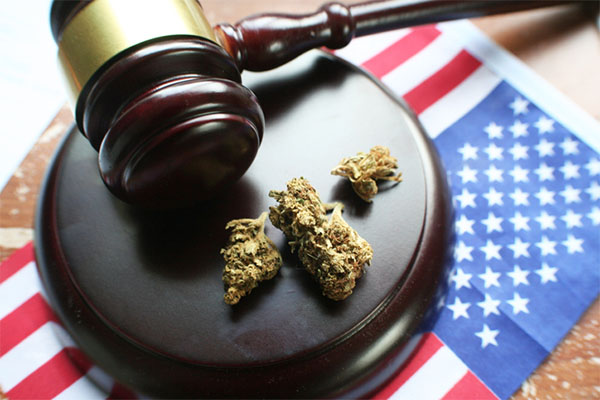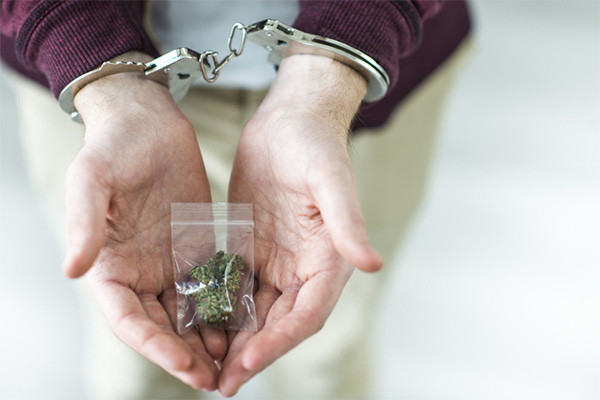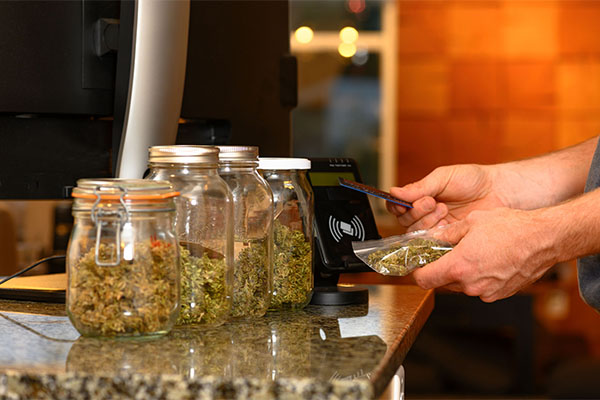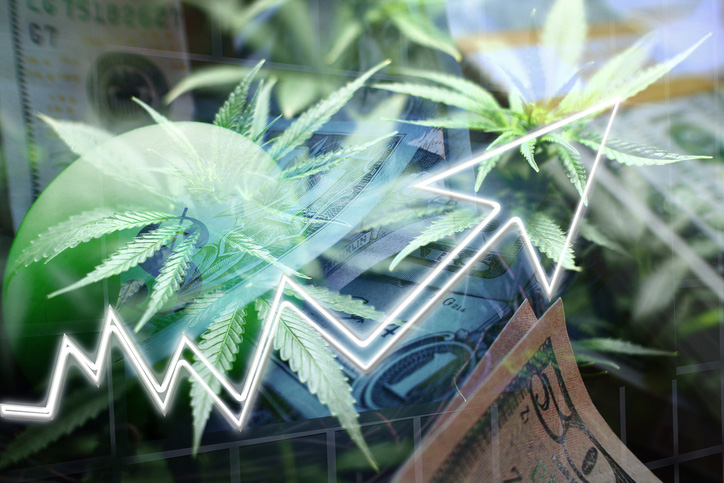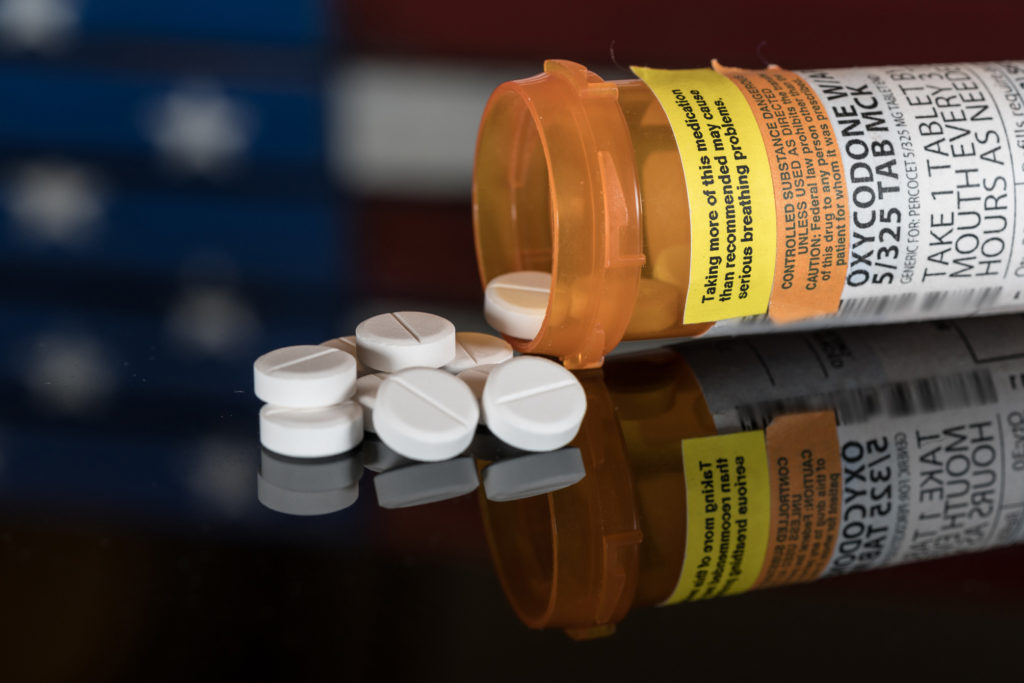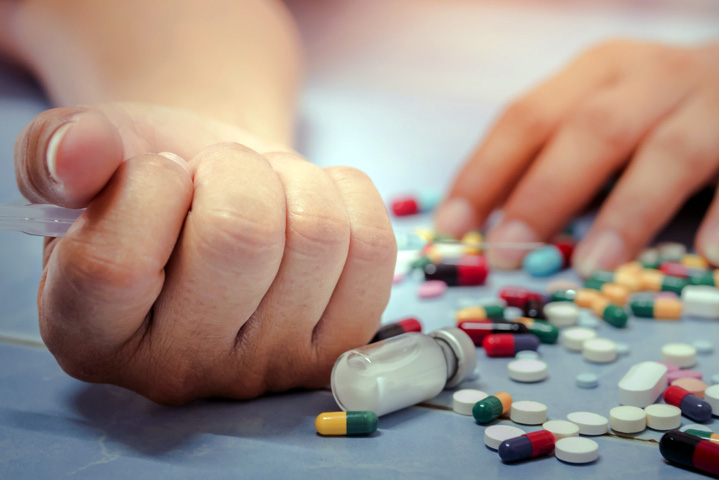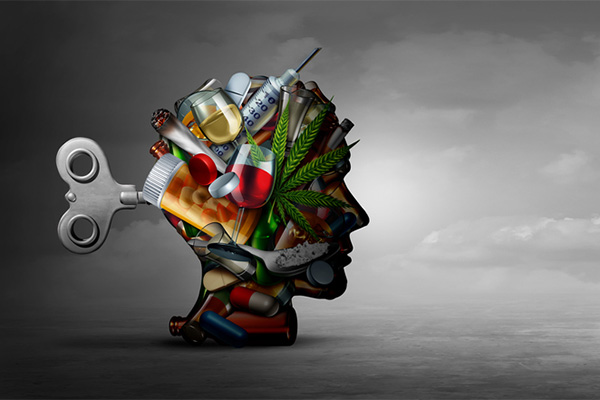Episode
Which Policy Most Effectively Prevents Harm: Prohibition or Legalization? (29:36)
The war on drugs is America’s longest war, and it continues to this day. Most agree the War on Drugs has been a failure and public sentiment is shifting. Today, state legislatures in the U.S. are passing laws legalizing and decriminalizing drugs. Regarding harm reduction, what public policy on drugs will help people the most? In this episode, John Hudak, senior fellow in governance studies at the Brookings Institution; Jeffrey Miron, vice president for research at the Cato Institute; and Sally Satel, senior fellow at the American Enterprise Institute discuss: which public policy on drugs most effectively prevents harm: prohibition or legalization?
Transcript
Sallie James: The war on drugs is America’s longest war.
President Richard Nixon: America’s public enemy number one in the United States is drug abuse.
Sallie James: It continues to this day.
Bill Hemmer: The 50 pounds of Fentanyl seized in one truck near Tucson – what are we going to do about this?
Sallie James: Most agree that the war on drugs has been a failure.
Congressman Matt Gaetz: …because the federal government has lied to the people of this country about marijuana for a generation.
Katharine Neill Harris: It really is a failed policy. I don’t think it’s an exaggeration to say that it is one of the worst domestic policies that we have in modern history.
Sallie James: And public sentiment is shifting.
Speaker 1: …with 91% of Americans saying marijuana should be legal for medicinal or recreational use.
Sallie James: States are passing laws legalizing and decriminalizing drugs.
Craig Melvin: It was a very good night for weed. We’ll start with marijuana. Four states were added to the list of places that allow recreational marijuana use for adults. That means that right now, nearly one in three Americans will soon live in a state where marijuana, recreational marijuana, is legal.
Sallie James: But what public policy on drugs will help people the most?
Speaker 2: Since Cook County’s implementation of drug treatment court, over 90% of the graduates have no arrest after completing the program.
Speaker 3: I am demanding that this war on us, this drug war, be abolished.
Sallie James: If Americans can broadly agree on nothing else, we should be able to agree that much of the bitterness and political tribalism that drives our public discussions is unhealthy for our country. In order to debate contentious public policy issues in a respectful and engaging manner without abandoning deeply held principles, the Cato Institute, in collaboration with the Brookings Institution, present Sphere.
Sallie James: In this episode: Which public policy on drugs most effectively prevents harm: prohibition or legalization? I’m Sallie James. Joining me for this discussion today are John Hudak, Senior Fellow at the Brookings Institution, Jeffrey Miron, Vice President for Public Policy at the Cato Institute, and Sally Satel, Senior Fellow at the American Enterprise Institute. Welcome to Sphere. It’s been 50 years since Richard Nixon famously declared war on drugs. But Americans don’t feel the war has gone very well. 83% believe the war has failed and 65% say we should end the war on drugs altogether. Now, the three of you come from different political traditions. John, you’re more of a progressive, Sally more of a conservative, and Jeff, you’re a libertarian, but you all agree that we need to change our approach to public policy and drugs in this country. What should we change first? Sally, I’ll start with you.
Sally Satel: I would start with one of the easiest things we could change, right, frankly, which is more treatment for people who have drug problems. I am an addiction psychiatrist, so I’m very, you know, sensitive to that and work in a methadone clinic and I know we need more of those clinics and more physicians who are willing to treat the problem, but I don’t think we should go straight to legalization. That is far too radical. It’s far too destabilizing for society. There are so many stops along the way and a middle ground that I think we need to exploit them much more, treatment being one of them, drug courts another, harm reduction strategies yet another. That’s huge. And that’s part of what we used to call, you know, demand reduction. It’s just part of that stool of harm reduction, supply reduction and demand reduction. I mean, one thing we want to work on is fewer people wanting to use drugs.
Sallie James: So, you would still focus somewhat on the supply – excuse me – on the demand side. John, what would you do?
John Hudak: Well, I think if we’re going to look at changing our nation’s drug laws, we need to look not just at the laws themselves, but how those laws have been implemented over time. And one of the realities is that drug policy in this country has left a lot of victims in its wake. Disproportionately, those victims are younger people and people of color. But at the same time, beyond disparities and arrest rates, et cetera, we have had a system in the United States that has seen the drug issue as a public safety issue and not as a public health issue. As Sally said, drug policy is very complicated. There are certain ways that we can address policies with regard to some drugs differently than we would have policy for other substances, but ultimately, we are not going to arrest our way out of a drug policy problem or a drug problem in this country. A combination of more sensible laws, laws and policies that are enforced in a more equitable way, a means of cleaning up the problems of the past in a variety of ways, and then, as Sally said, thinking seriously about treatment, particularly for the more harmful drugs in our culture, and the substances that have a higher proclivity toward use disorders.
Sallie James: And Jeff, what about you?
Jeffrey Miron: So, I would like people to focus on the fact that the vast majority of the negatives we associate with drugs, not all, but a huge fraction, are the result of its legal status and that without moving in the direction of legalization, it is very hard to make much progress. I fully agree with Sally Satel that maybe the public is not ready for full legalization yet, although in marijuana it’s certainly moved a lot in that direction. But many of the things that make sense as intermediate steps are themselves partial legalization, so expanded methadone treatment, or expanded ability for doctors to prescribe opioids with less restriction and oversight. Those are making opioids more legal, more in the direction of being legal, and because of that, I think they would do great good. They move things out of the black market and into the legal market. But it’s important to think that it’s the law that outlaws these things that is the fundamental problem. There’s only so much we can do with smaller steps with partial measures such as treatment and harm reduction. Those are all good things, but I think to make a really radical change, we need to go much farther and be pushing toward legalization, even if we can’t get there right away.
Sallie James: So, Sally, I want to perhaps draw out some more detailed recommendations from something you said earlier. While you’re critical of the drug war, you’ve also talked about the challenges that drugs present to society and the responsibilities it might have to drug users. In a Wall Street Journal piece, you said, this is a quote, “The vexing paradox is that the very individuals who feel compelled to use intoxicants to excess are often those least psychologically equipped to handle them.” So, what do you think that says about how we can create the most effective public policy?
Sally Satel: Well, I think we always have to in policy focus on the people who are the most vulnerable and who can do the most harm when they get involved with a kind of behavior. And those are going to be people who are addicted or who are highly vulnerable to addiction, who are recovered, but those folks are often vulnerable to relapse, especially when drugs are very much available. I think it was John who mentioned, you know, which harm? Which kinds of drugs? And also, which kinds of use of drugs? I mean if we’re talking just about responsible use of drugs, I mean, I read Carl Hart’s book, “Drug Use for Grown-Ups.” In theory, I don’t mind what people do in the privacy of their own home, especially if they pay their taxes and help their kids with their homework, and are good employees, and neighbors, and spouses, that’s fine. But again, it’s the folks who can’t handle their drugs. That predisposes an understanding of why people use drugs in the first place, which is to say they’re – they use drugs for reasons, and they don’t use drugs because they’re around – they may use drugs because they’re around where they use drugs to excess. And that’s what we’re concerned about, you know, for reasons. And it’s very complicated, but I also think it’s fair to summarize it and say, listen, this is the way they can solve a problem. A lot of people are in a lot of pain, they can’t cope, and at first, drugs work. And then they don’t. And then I come in, you know, in my methadone clinic if they’re – again, it doesn’t have to be methadone, but you know, if people can access help or if they commit a crime which, you know, Jeff has certainly – Jeff Myron is correct that some of the harm is due, is kind of legally constructed, but some of it’s just a social inevitable consequence of too much drugs and those people will sometimes commit crimes. A lot of times, frankly. They will neglect their children. They will do things that do involve the criminal justice system. And I think actually it’s a great advance to have things like drug court diversionary programs like that, because if we adopted a strict libertarian view of legalization, then, ironically, patients or individuals who committed crimes to purchase drugs would be punished even more severely than they are now, because we wouldn’t care why they committed the crime. Now we care why. And if – in other words, but for your drug problem, you wouldn’t have shoplifted, they’re, you know, that’s a different consequence than if you shoplifted and you’re addicted, then you’re eligible for a drug court.
Sallie James: All right. Jeff…
John Hudak: If I can…
Sallie James: Jeff…
John Hudak: If I can just very quickly…
Sallie James: Yes, please.
John Hudak: …to that, you know, part of what Sally is also getting at is, you know, she had mentioned part of this is legally constructed, but part of it is social, and part of that socialization of the way that we think about drugs in this country is that all drug use is bad. There’s no space in which drug use can be recreational or can be responsible. And the reality is that that’s false, under certain circumstances, but also it creates a stigmatization around drug use, around use disorders, that makes it even harder, to Sally’s point, even harder for the most vulnerable among us to be willing to seek out the help that’s necessary, and sometimes it leads to worse use disorders, more intense use disorders. Of course, it results in accidental overdoses, and suicides, and a variety of other really harmful outcomes. But the core of that is this socially and legally driven stigmatization that tells people if you use drugs, that is bad. If you are a drug user, you are a bad person. And as I said, it makes it all that much harder, then, for someone to acknowledge the problem and then deal with the problem if a problem does exist.
Sallie James: That’s interesting, because I wanted to get Jeff’s perspective as well on the points that Sally and now you, John, have raised, which is: Jeff would it change your recommendations if you consider that the people who are most likely to abuse drugs are also less likely to seek or perhaps have access to help? I mean, do we not have a selection bias problem here?
Jeffrey Miron: So, I think the crucial libertarian view claim is that while we completely accept that some people are going to misuse drugs, we tend to think the evidence shows that most of those people are going to continue to do so even under prohibition, and they are much worse off using or abusing drugs under prohibition, partially for the reasons that John just outlined, because of the stigma, and reduced likelihood that they might seek treatment, and things like that, but also they will be buying their drugs from people who by, under the law, are criminals in, you know, dark alleys and things like that, instead of being able to walk into CVS and purchase something at a much lower price, because prohibition also elevates the prices of the illegal drugs. When they purchase in a legal market, these same people, whether they are using or misusing drugs, they will at least not be overdosing because they purchase something that claimed it was 10% heroin when in fact it was 5% Fentanyl, far more potent and causes overdoses and things like that. So, I think that it’s precisely for the people who are most vulnerable and are most likely to make the bad decisions that legal markets provide far more protections, okay, than an underground market. And so, that argues in favor of legalization as well.
Sally Satel: I mean, this is – this whole thing is, you know, a ball of various ornate trade-offs, but, you know, we did kind of have a natural experiment, though, in otherwise safe drugs being available. And I’m referring, you know, to pill mills in Appalachia, where you kind of could walk in off the street and use your Medicaid card or cash and you know, walk out with a baggie full of Xanax and OxyContin and Oxycodone, and there you have your otherwise safe drugs. And they were safe. They certainly weren’t contaminated. And people either bought them and then gave them to a dealer, or sold them themselves, or used them themselves. And, you know, again, that gets back to this dichotomy between the person who, you know, just, you know, could use opioids responsibly and yes, it is true. That happens and we never pay attention to that because as treatment providers we don’t see those people and researchers don’t usually pay attention to those folks. So, that does exist, not that I encourage folks, but I mean it is wrong to ignore that reality. Nevertheless, when it came to the, you know, Appalachia, or even now, you know, in San Francisco, at least those people bought their drugs in San Francisco on this, you know, in these encampments, some of them actually being given the drugs. That’s – I worry about that kind of an outcome too.
Jeffrey Miron: But I would say, in response, that as we became concerned about the opioid crisis, we increased the number of restrictions on accessing opioids legally, prescription opioids, and the rate of opioid deaths, if anything, went up faster. It switched. It forced more people to the black market, so more of the deaths were from Fentanyl, okay, rather than say from prescription opioids, also the detailed data on who is overdosing don’t suggest that it was mainly people getting it from prescribing. Indeed, it’s the fact that many of those people who wanted access, continued access, after they’ve been prescribed, whether for what some would call good reasons or bad reasons, but for whatever reasons felt the need to continue using but couldn’t then access legal prescription opioids of known dosage and went to the black market. That plays a substantial role in the increase in deaths that we experience. So, I still think it goes in the direction that on net, legalization reduces harm to the people who use.
Sallie James: So, John, I want to – I mean, what Sally and Jeff are talking about now, obviously, is about some of these kind of experiments, policy experiments we’ve done with legalization, or in this case, prescription of drugs restricted if you like, use, or prescriptions. Eighteen states, as well as the District of Columbia, have legalized marijuana. Last November, Oregon became the first state to decriminalize small quantities of all drugs, including heroin and meth. I mean, what do you think, not just about the points that Sally and Jeff are saying, but how those experiments have gone in legalization to varying degrees and for different types of drugs?
John Hudak: Well, part of the basis for legalizing cannabis more broadly in the United States and now steps, like you said, in Oregon that has legalized psychedelics, decriminalized all drugs here in the District of Columbia where most of us live, the decriminalization of psychedelics, plant-based psychedelics has also passed a referendum and there are a lot of forces that go into a person’s decision around questions of drug policy, particularly at the ballot box, particularly in a referendum, but you know, two of the major drivers, particularly in the conversation here in the District of Columbia, but elsewhere in the country, focus on where law enforcement funds should be better spent. And Jeff has done spectacular research in the space of about just calculating the costs of the drug war, which most people do not have any grasp of the sheer amount of money at the federal, state, and local level that is put into a drug war that is failing every year, consistently failing, failing to live up to any of its expectations. The other is something that Jeff and Sally both touched on in their prior comments, and that is consumer safety. It’s true for cannabis, it’s true for other products, that when it is produced in a regulated system and it is sold at a regulated storefront that they’re not – you’re not going to have, you know, Fentanyl laced into other products. You have an idea that there is a system in place for product recalls, there is testing done for mold and hard metals and other kind of contaminants including pesticides. That regulated market is naturally a safer one. And now, to Sally’s point earlier, it doesn’t necessarily fix the problems that we have and use disorders can still be out of control, but from a very basic level you would much rather a drug user be using something that is regulated and safer than something that is unregulated without any type of track and trace system where you don’t know what you are consuming as the user, and in many cases the dealer doesn’t know what they’re selling the person. And so, when we look at the states that have taken steps in this direction toward legalization, and the system in Oregon really isn’t up and running yet around non-cannabis substances, but with our nation’s cannabis laws, you have very safe, well-regulated, well-tested products that are being sold in a legal, regulated market. Tax revenue is being collected, fewer police resources are being directed toward low-level cannabis crimes, and systems can function quite a bit better. I would say that the experiment so far in most states has been a largely successful one, particularly relative to prohibition, a system that has done nothing to achieve its stated goals. In a lot of the states that have legalized cannabis, the stated goals during either the referendum process or the legislative process for states that don’t have or chose not to use the ballot initiative to approve cannabis legalization, most of those expectations and goals have been lived up to so far. And I think that alone shows that this is – it may not be the best system, to Sally’s earlier point, but it is certainly a system that is working better so far compared to prohibition.
Sallie James: John, you touched on this earlier, a report you did for Brookings on reversing the war on drugs cites research showing black people get arrested for marijuana more than three-and-a-half times more often than white people, even though the two groups use marijuana at similar rates. How, if at all, should that factor into drug policy and some of the points that you’re making here?
John Hudak: There’s two ways that I argue that this should be factored into drug policy. First, we have to understand that there is something institutionalized in law enforcement that is driving this. And we know that’s true, because we know that legalization does not fix the problem of racial disparities. In states that have legalized cannabis, there is still about a two-and-a-half times differential in arrest rates between white Americans and black Americans even in those legal states, people still committing some of the leftover crimes that exist in a legal cannabis market. So, if we’re going to move forward and try to reform policy broadly in terms of drugs, we have to think about not just legalization being the final step, but rather legalization as the first step in a longer journey toward addressing some of the more, as I said, systematic or institutionalized problems that we have in this country, and the drug war has been a basis for some of those challenges and they have really shone a light on some of those challenges at the same time because individuals, and communities, and neighborhoods have been disproportionately victimized by the war on drugs. I argue that we should also look at some sort of restorative justice and restorative economic development within these communities that have been targeted consistently by the drug war over the course of decades, which creates a spread effect within the community for other social problems, like decreased economic outcomes, decreased health outcomes, and things that, to Sally’s earlier point, ultimately ends up leading some people to substance use disorders because of those challenges economically, educationally, socially, and of course, an introduction oftentimes to the criminal justice system.
Sallie James: So, well, Jeff, I’d like your perspective on this. Given the damage that has been done by the drug war, perhaps disproportionately so in these minority communities, would reparations be an effective policy in your opinion?
Jeffrey Miron: I understand the concern, the call for, the support for reparations. There’s no question that the drug war has disproportionately harmed minorities. That’s been true going back to the earliest prohibition laws in the United States, where the minority in question was actually Irish immigrants, but it took place with respect to the prohibition of cocaine, which was directed against African Americans, the prohibitions against marijuana directed against Mexican Americans, opium laws against Chinese immigrants, and so on. I’m sort of hesitant to actually endorse reparations because I think the practical limits to doing that are humongous. Figuring out what the amounts are, who are the affected parties, balancing concern over reparations for one bad policy, the drug war, against reparations for all sorts of other policies which were – historically have been horrific in the U.S. Slavery is the super obvious example, but I’m sure we could come up with many others. So, I don’t know at what point a society has to say we’re going to stop doing the terrible thing that we’ve been doing so we’re not inflicting further harm, but just because the practical difficulties, we have to let bygones be bygones. That’s a very hard question.
Sallie James: Let’s finish then with some quick final thoughts, since we won’t solve that particular issue today. Sally, would you like to sum up?
Sally Satel: There are a few points I didn’t get to make. One is that we don’t know who – we don’t know the extent of the deterrent effect of the current regime. And again, I want to enforce that I am certainly not in favor of incarceration for possession or use. That’s an utterly absurd waste of human capital and cruelty and taking fathers, often fathers, away from children and decimating neighborhoods, and go on. That’s certainly not what I am advocating it anyway. But, to the extent that we’re not legalizing, we don’t know how many people would use if we did have a much more liberalized regime. I don’t even know how you really calculate that, but that’s just an important thing to keep in mind. The other thing is that even though my first comment was, you know, we need more drug treatment and I need more drug courts, I have to say that a lot of patients, a lot of people who are in deep trouble with drugs, actually don’t want to be in drug treatment and there are good data showing that the majority don’t finish even a year, and a year is considered sort of the minimum amount of time one would need to be in a treatment program to have any chance at a sustained recovery. So, it’s, again, it’s just very complicated when, you know, Jeff mentions, rightly, that, you know, when prescription opioids became harder to divert then people turned to more dangerous drugs, but if there were more treatment, they could go to that treatment program, and one would hope that they would stay in that treatment program. But that’s not guaranteed.
Sallie James: John, any final points?
John Hudak: Sure. First, I’d like to thank you, Sallie, for hosting this and bringing us together to have this conversation. You know, cannabis policy and drug policy more broadly in the United States is one that I think this conversation has shown to be quite nuanced. I think, unfortunately, a lot of people think of drug reform as an on-off switch, a one zero, a black or white, but the reality is, and Sally’s opening comments hit on this I think quite eloquently, that, you know, there is a lot of room in between the two poles of full-scale legalization and full-scale prohibition, which, again, I think exemplifies how complicated this policy is. There are – as was stated earlier, there are supply and demand considerations around this. There is product safety considerations. To Jeff’s point, there’s just issues of freedom, issues of choice, issues of the decision that you’re going to make in your own home and in your own life, and that nuanced part of this conversation, the more complicated, grittier, what I think a lot of people consider the way less sexy parts of the conversation are the ones that are so essential to have. And I think this conversation today shows that you can find three people with very different points of view when it comes to cannabis specifically, or drug policy more broadly, and those conversations can be meaningful, they can be thoughtful, they can be calm, and they can engage all of these subsidiary issues that must be considered beyond just the yes or no when it comes to reforming drugs.
Sallie James: And Jeff, you get the final word.
Jeffrey Miron: Thank you for hosting this and thanks to Sally and John for participating. I would just sum up by saying the libertarian starting point for anything is that we presume we let people do what they want, we respect freedom, unless there’s a compelling case that – for two things, one is that some people are misusing that freedom in a way that harms others, and that certainly occurs with some people’s drug use, as it occurs with some people’s driving on the highway. But the second condition for wanting to deviate from just respecting freedom is that we have a policy which will actually make things better on net rather than worse. So, the hardcore libertarian economics position is prohibition is the least likely way to produce more benefit than harm from intervening with people’s choices about whether to use drugs. Subsidizing treatment I’m not so convinced is a good expenditure, but it doesn’t do great harm and it probably helps some people. Other sort of harm reduction mechanisms, the same sort of conclusion. The crucial thing is if we don’t have a legal market, we get all the bad consequences of prohibition which almost certainly outweigh any benefit. Thank you.
Sallie James: The purpose of Sphere is to debate and consider deeply contentious issues in a respectful forum. Sally, John, Jeff, thank you for doing that here with me today. For more information about Sphere, please go to ProjectSphere.org. Thank you so much for watching.


